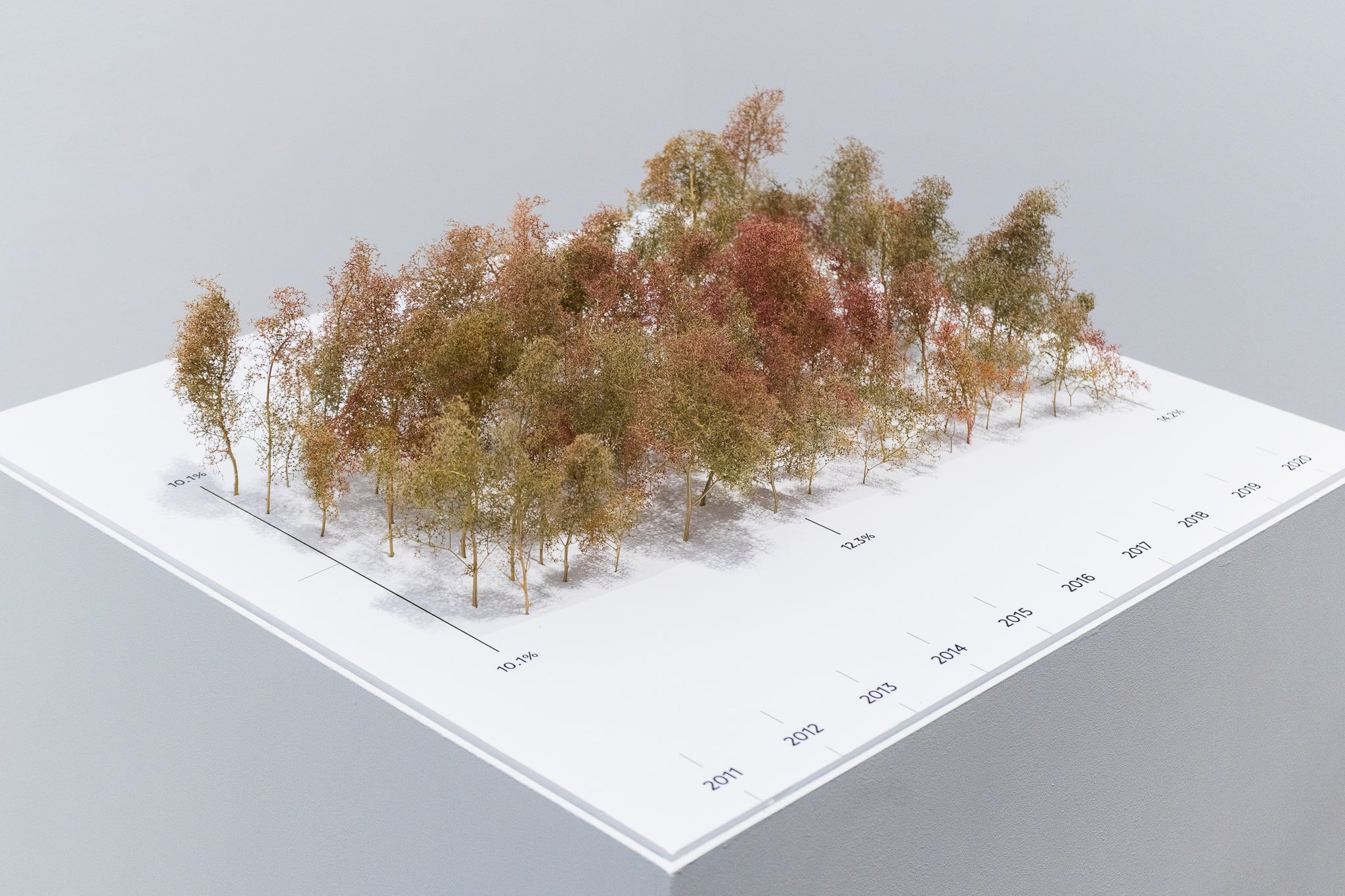Our relationship with time is complex, and provokes questions about our culture, our habits, and our character, defining who we are and how we behave.
With this in mind we produced an interactive installation to deconstruct and debate this universal concept, and better understand why it is that each of us have our own very personal relationship with time. Mixing craft and data, we generated visualisations that grew constantly as the days went by, reflecting a clearer picture of how people felt.
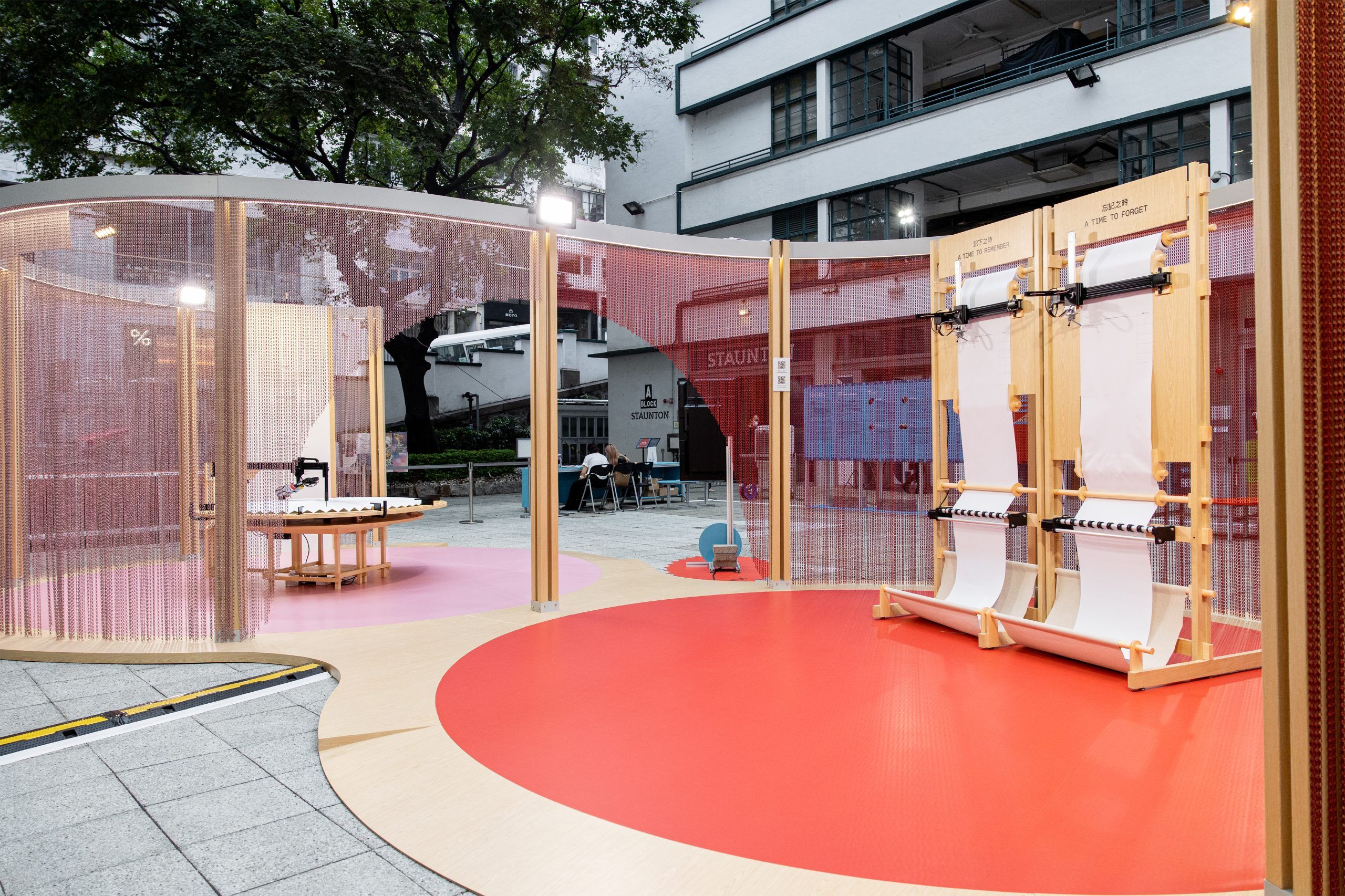
Paper clocks
Throughout history, we human beings have always tried to encapsulate time, to control it, to manage it, and to do so we have created millions of artefacts. It would be simple to say that time is the number we read off the clock, but we know that it is much more complex than that. We were particularly interested in exploring how such a familiar concept can be so evasive and difficult to define.
In producing this installation, with the help of our partners in crime at Hamill Industries, we combined two key elements: play and materiality.
Firstly, we know from experience that it is through play and interaction that we form a more honest and emotional connection with visitors. Secondly, when considering the materiality, we were keen to work with inks and papers similar to those found in traditional Chinese craftsmanship. While researching we came across the typical folded paper fans, which in some way remind us of the shape of a clock.

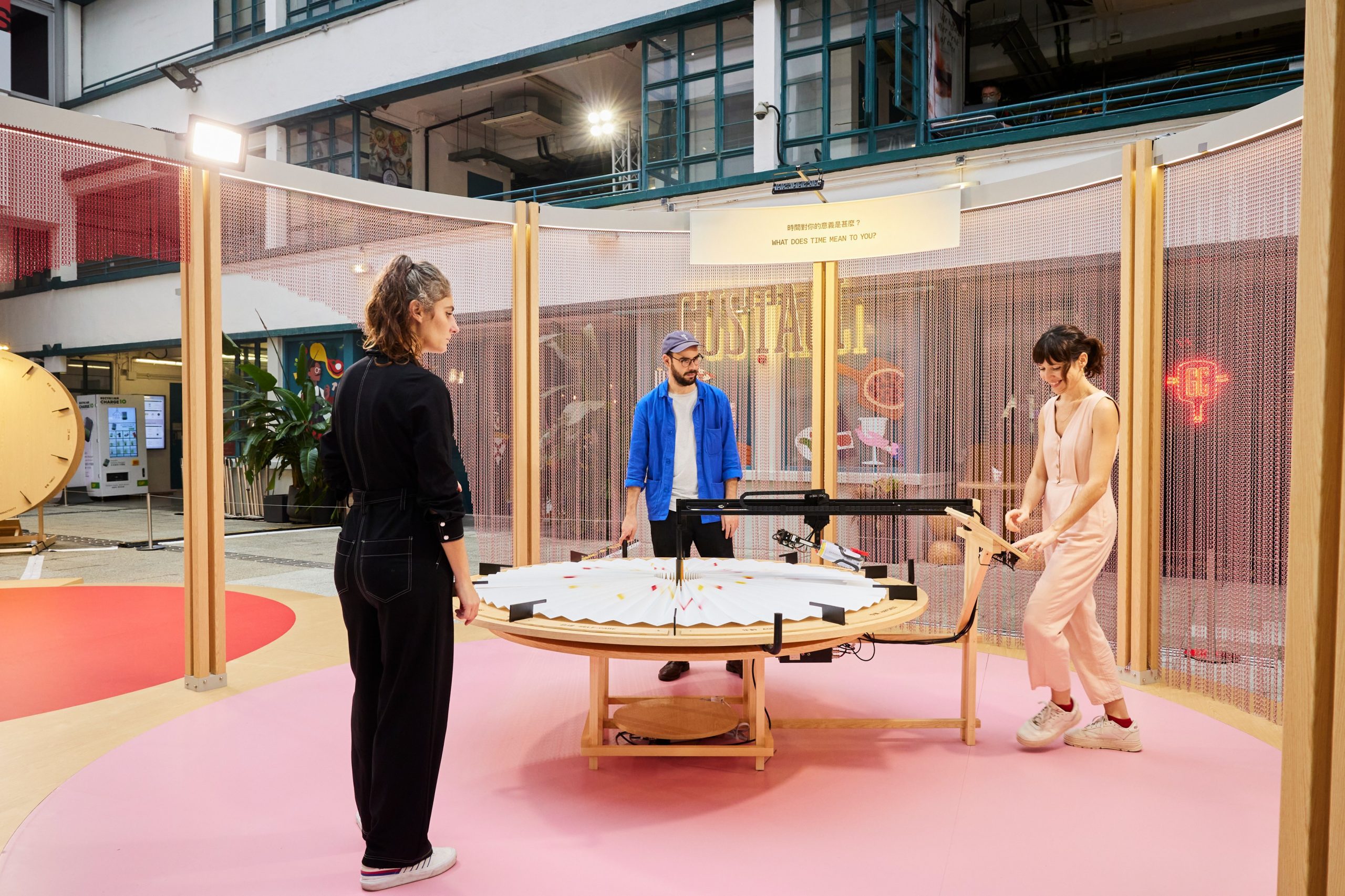
Once completed, the clocks were then displayed on the wall, and replaced with a new question each day, accumulating so that we had a whole series of questions and their responses visualised for new visitors.
The responses to the questions were also shared on the deTour festival website, where people could view and participate in real time from around the globe.

There was then also the necessity of collective visualisation, because if we want to learn something from the participation of our visitors then we have to be able to find patterns. As the days went by the paper clocks were completed with coloured spray paint, representing a response to questions such as "What does time mean to you?"
Participants were offered a choice of 8 options, and then chose a colour of spray depending on whether they felt time controlled them or they controlled time. This they could then spray onto their choice of 8 responses, each one correlating with a segment of the paper clock. In the end we could observe that those who felt in control of time felt that it represented family and self-care, whereas those who felt controlled by time associated it more with hope and heritage.

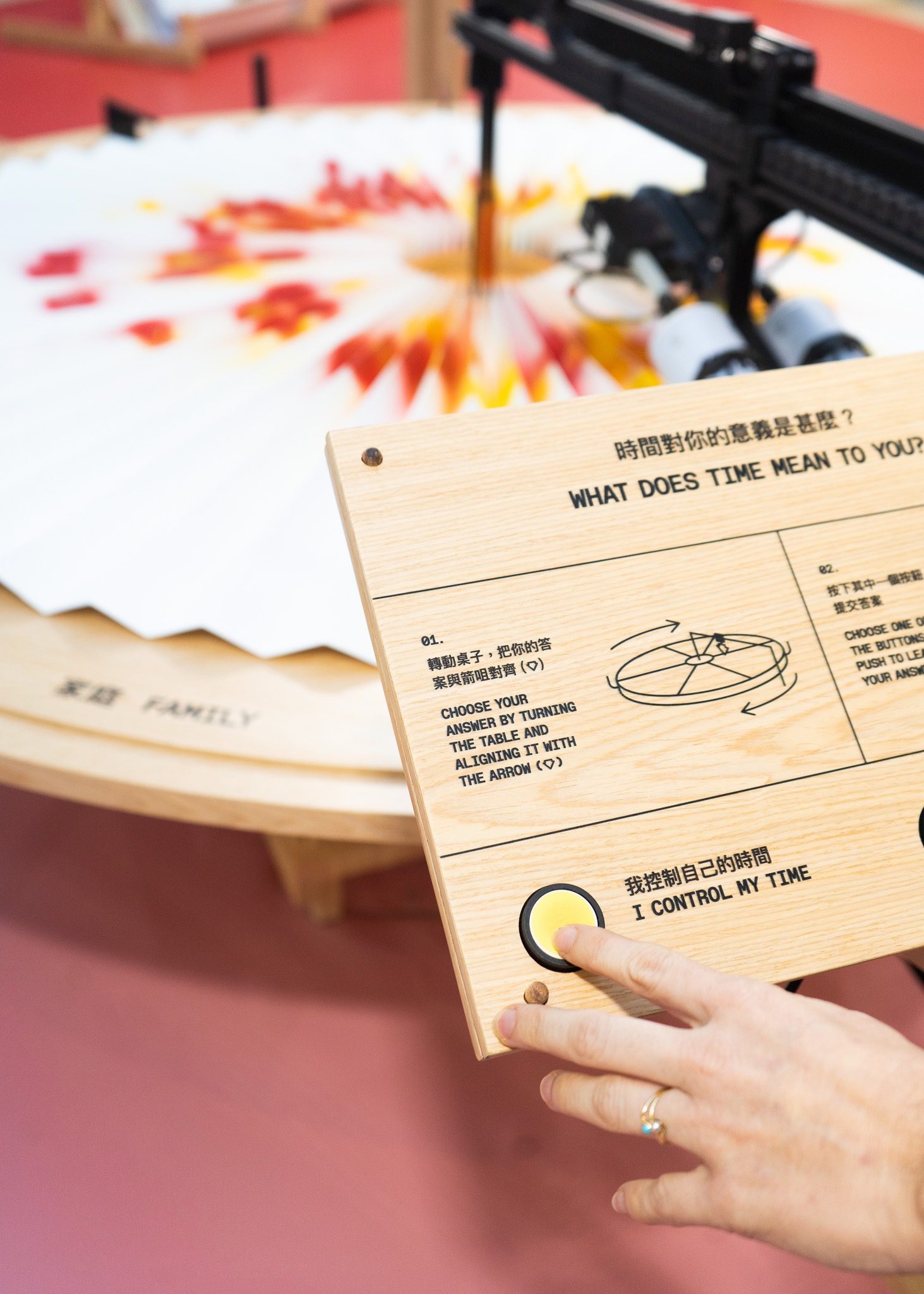

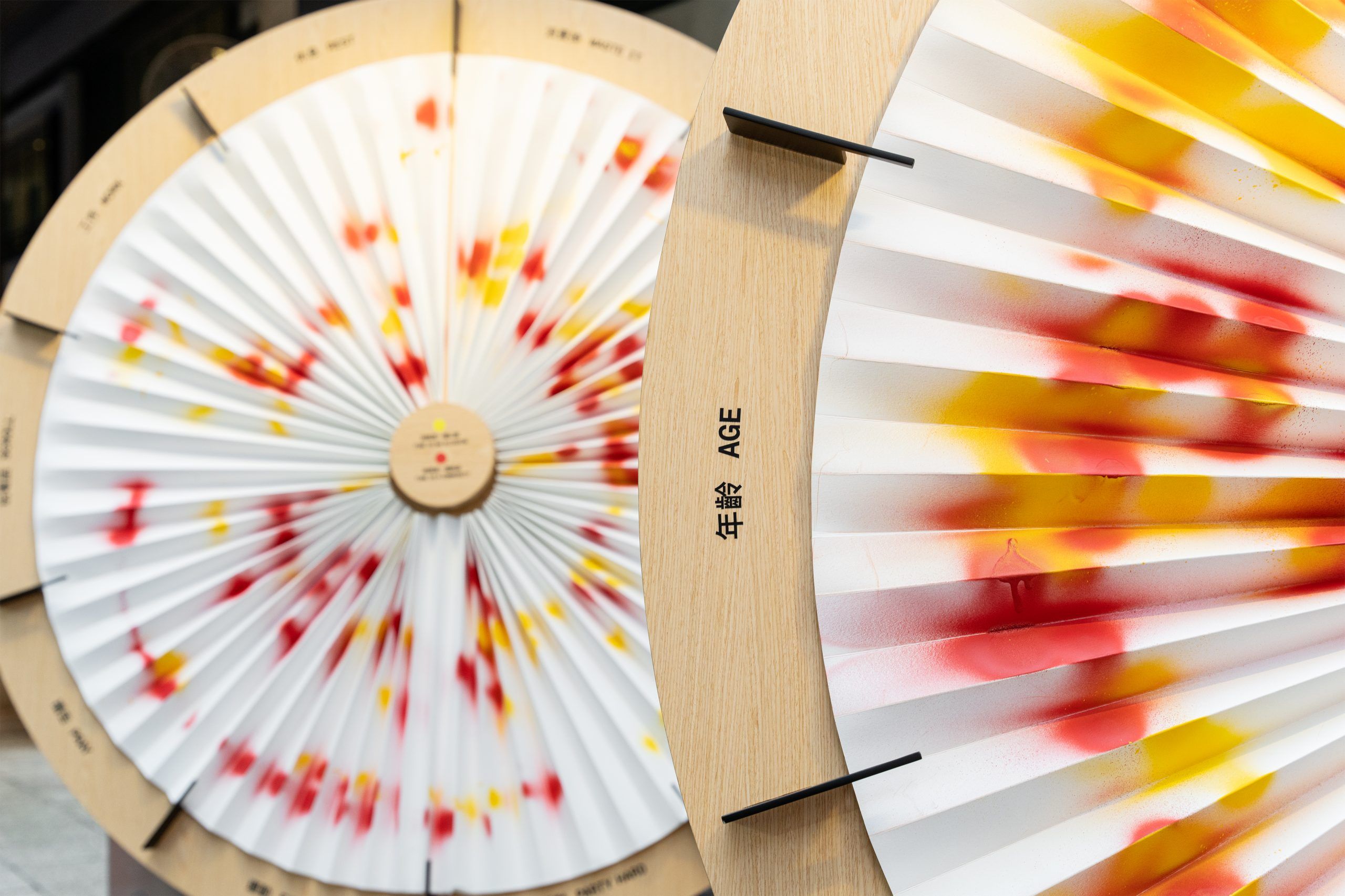
Memories
This second installation looks at the effect time has on our memory, and how it brings some elements of the past into today, whilst fading others into the distance.
The power of memories is hard to overstate. We’re all a product of our past experiences, and capable of instantly calling to mind specific moments, scents or people we met from years or even decades ago.
An exchange that may have lasted for a minute or two, all that time ago, can etch itself into our mind forever. But while we struggle to hold onto some memories, there are others we would rather forget.
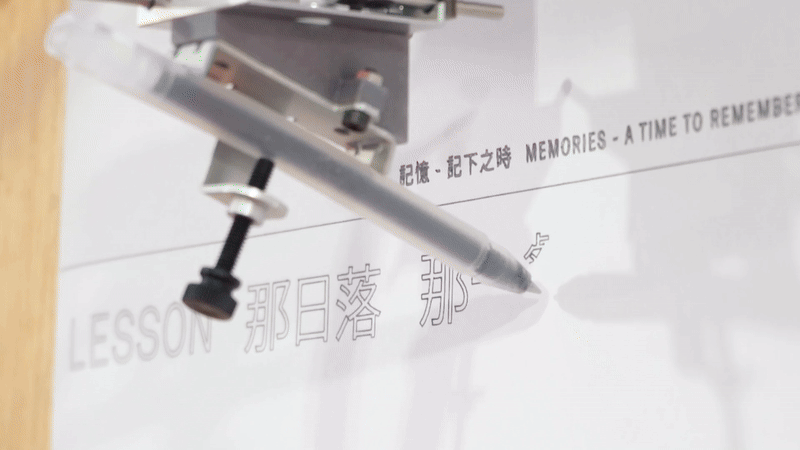

As in the first piece, we worked with paper and ink, this time to invoke the feeling that we were collectively writing a diary, which is of course an object dedicated to memory.
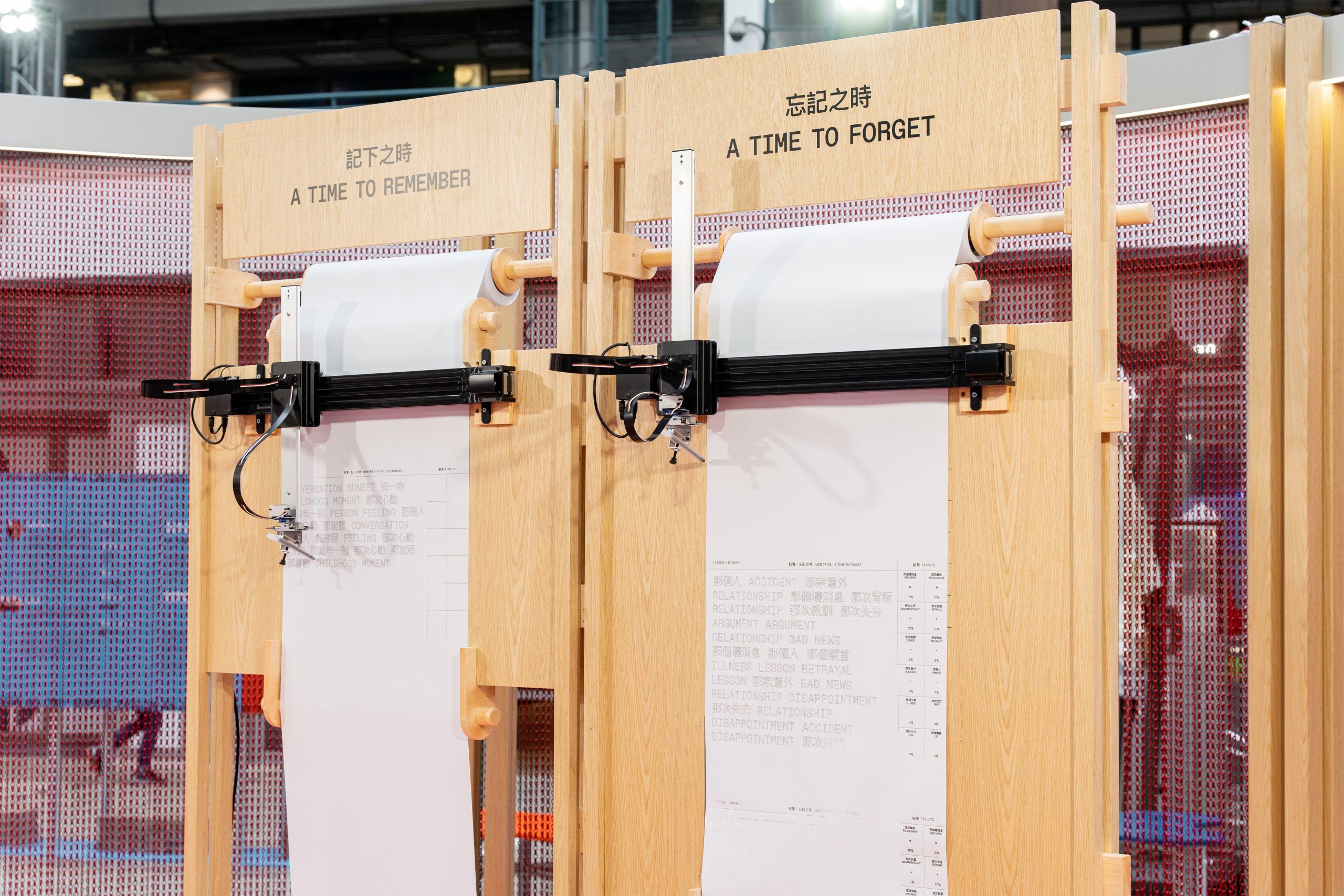
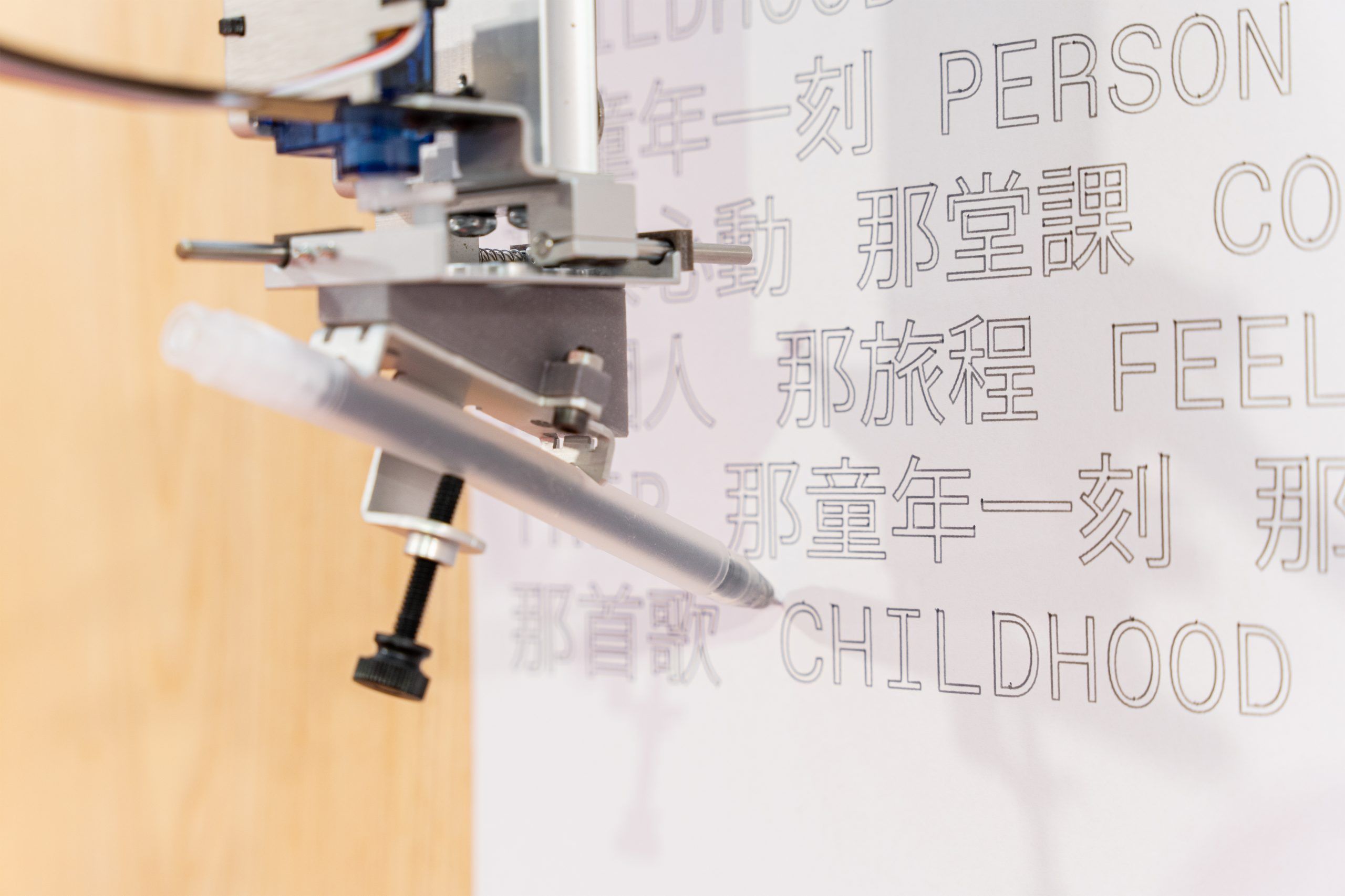
Hand-writing is an essential expression of humanity. Although we always work with technology, we wanted to celebrate the artistry of the human touch, the delicate stroke of the pen across a blank page, crafting a personal story to record a lifelong memory and leave a mark.

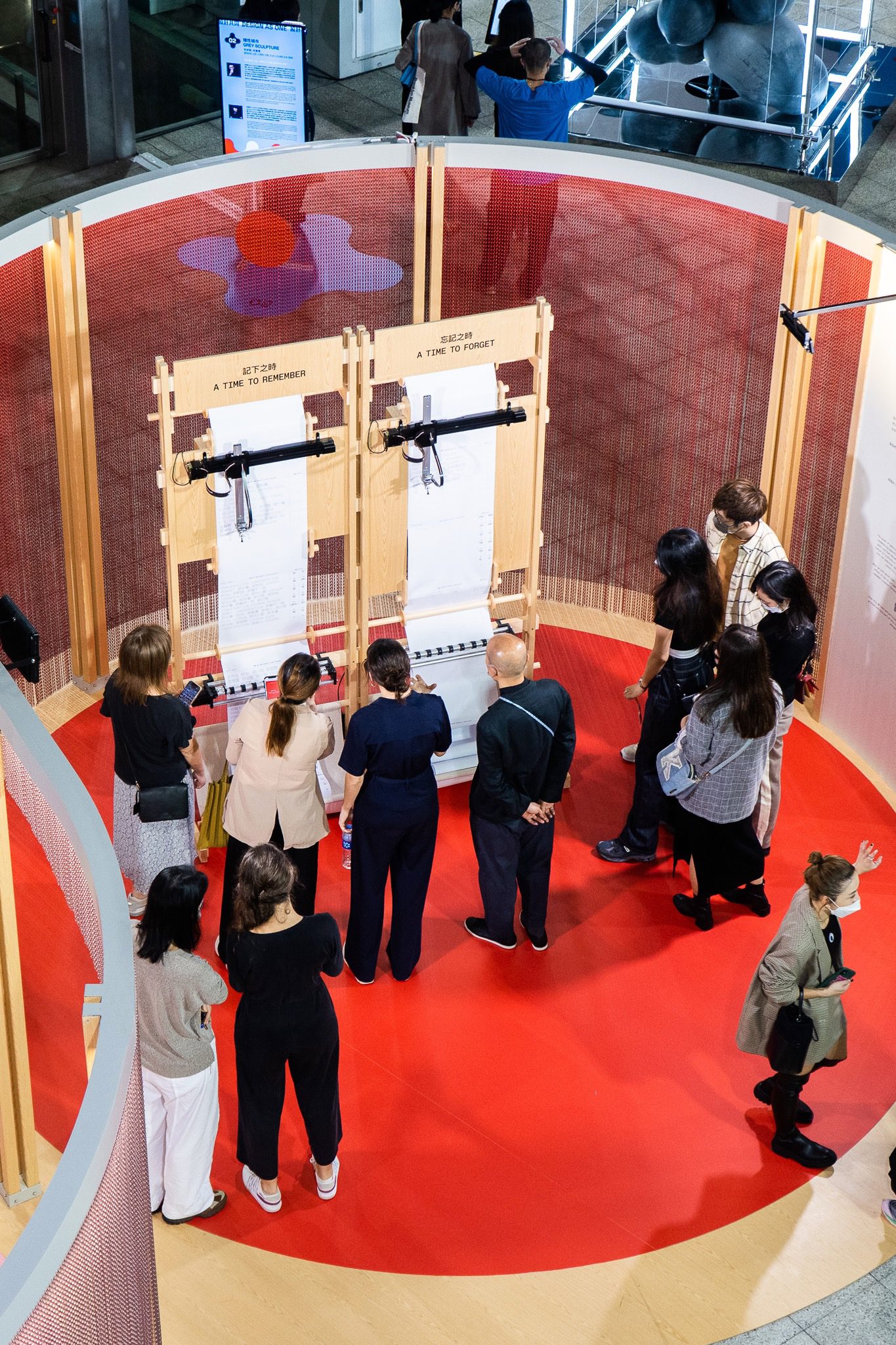
To begin this collective diary we asked our visitors a simple question:
Would you rather remember or forget something forever?
Then by scanning a QR code visitors' could see their memories written down in real time. Those memories they wanted to forget were written but disappeared immediately afterwards thanks to a heating bed that made the ink magically disappear. A metaphor for how our memories for one reason or another will eventually fade, no matter what.
About time
Time is:
Number of answers:

